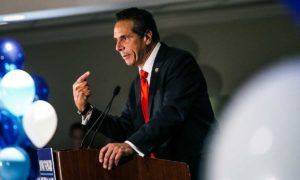When I first started writing New York Skies in 2013, I made a point of attending a number of UFO conferences for research purposes. At that time, notable speakers and seasoned UFO aficionados told me that roughly one-third of Americans thought that UFOs existed. National Geographic’s
2012 polling data supports the deduction that one-third of American adults think UFOs are very real.
The other notion was that there were huge numbers of UFO sightings, but only 1 in 10 persons actually reported them. I accepted both those notions because I had nothing else to go on.
The 1-in-10 model was based on the fact that numerous national UFO speakers would ask their audiences to raise their hands if they had seen a UFO. The majority of the audience raised their hands. Then the speaker would ask how many actually reported the sighting. Most of those hands went down and then someone counted the number of hands still up. The general result was about 10 percent of the audience indicated that they had reported their UFO sighting.
Several years later, when my co-author and I were compiling the data for the UFO Sightings Desk Reference, I began to have my doubts about the 1-in-10 model. My first thought was that these UFO speakers were usually addressing an audience at a UFO conference; in my thinking, that’s preaching to the choir and leads to a biased sample.
Read: The Truth Is Out There: UFO Columnist Cheryl Costa’s reference book presents hard data on a controversial subject
So I decided to explore the numbers in several ways. The following hypothesis uses average numbers. Census tells us that the U.S. population is about 325 million. Strip away children and we have about 245 million adults, who are the ones most likely to report something.
For the past 10 years, from 2008 through 2017, the combined NUFORC and MUFON sighting data yielded an average of 10,840 reported sightings per year. If we divide 245,000,000 by 10,840 we get 22,601 — or 1 in 22,601 persons in the adult U.S. population reported a UFO sighting. That number still nagged at me as not being accurate, either. Perhaps we must take into account only that portion of the population who say they experienced a UFO sighting.
A 2017 Fox Pictures poll indicated that
16.74 percent of Americans say they’ve had a UFO sighting. Of course we have no time frame. For the sake of our discussion, let’s assume all their sightings were in the past 10 years. So 245,000,000 adults times .1674 equals 41,013,000; in essence, 41 million persons say they had a UFO sighting. So if we divide 41,013,000 people by 10,840 in average UFO sightings; we get 3,783. This suggests that 1 in 3,783 — or roughly 1 in 4,000 — persons actually reports what they see, on average.
Read: Examining the decline: Another look at the data on UFO sighting reports
Obviously, for this model I’ve made certain reasonable assumptions. I could way off or be dead on; but given the known data. I think that ¼,000 is much more realistic than 1 in 10 as is preached in UFO conference circles. Our national speakers need to stop using such a simplistic model to explain such a complex question as observed sightings vs. reported sightings.
The truth is, until some national polling service asks the right polling questions referencing UFO sightings within a specific time frame we really won’t know. Remember: Just because we want a statistic doesn’t mean that it exists. Data must be gathered and analysis must be made.
Perhaps after disclosure, maybe the Census department will make an effort to more accurately measure the UFO issue within the American population.
On the Road
- Duke University, Durham, North Carolina, March 19-20
- UFO MEGA CON, Laughlin, Nevada, March 24-30
- Ozark Mountains UFO Conference, Eureka Springs, Arkansas, April 12-14
- Pine Bush UFO Festival, Pine Bush, New York, May 18
- Michigan UFO Con-Tact – Sept. 20-21
- Greater New England UFO Conference, Oct. 4-5















